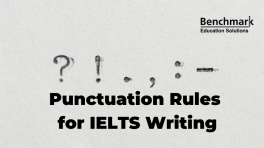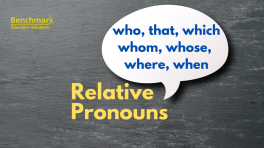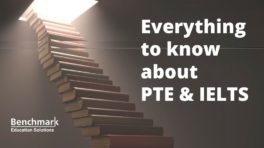Subject-Verb Agreement Tips for IELTS Grammar
- 0 Comments


The rule of concord (a.k.a. subject-verb agreement) is all about ensuring your subject and verb are in agreement. In other words, if your subject is singular, your verb needs to be too. This is a common error in IELTS. By mastering the subject-verb agreement, you can improve your grammatical range and accuracy.
Table of Contents
1. Subject-Verb Agreement Rules
Although this grammar rule might seem easy, candidates often get confused with certain subjects. Avoid making unnecessary mistakes by familiarising yourself with the following rules.
1.1 Titles of Works and Names
Titles of books, movies, and other works are singular, even if they appear plural.
- Singular: “The Chronicles of Narnia” is my all time favourite series.
1.2 Collective Nouns
Collective nouns (e.g., team, family, group) take a singular verb.
Example: The committee has decided on the new policy.
1.3 Subjects with Quantifiers
When subjects are preceded by quantifiers like “a number of,” the verb agreement can change. It’s important to note that “a number of” is always followed by plural verbs, and “the number of” is followed by a singular verb.
- Singular: The number of students is increasing.
- Plural: A number of students are participating.
1.4 Words ending in -s
Some nouns that end in -s are singular and take singular verbs (e.g., mathematics, news).
Example: The news is shocking to all of us.
- Singular: The number of students is increasing.
- Plural: A number of students are participating.
1.5 Irregular Verbs in the Third-Person Singular Present Tense
In the third-person singular present tense, the verb form usually takes an “-s” or “-es” ending (e.g., “he runs,” “she watches”). However, some verbs are irregular and do not follow this pattern (e.g., “he has,” “she goes”).
- Regular: She watches TV every evening.
- Irregular: He goes to work by train.
1.6 Indefinite Pronouns as Singular
Indefinite pronouns (e.g., everyone, somebody) are usually treated as singular, even though they may refer to multiple individuals.
Example: Everyone is invited to the meeting.
2. Common mistakes
Let’s review a few common errors that candidates often make.
2.1 Following there is/there are
“There is” is used with singular nouns, and “there are” is used with plural nouns.
Incorrect: There are something I need to discuss with the head of department.
Correct: There is something I need to discuss with the head of department.
2.2 Using modal verbs
A common mistake is adding an “-s” to the main verb after a modal verb. If there is a modal verb, the verb that follows needs to remain in it’s base form.
Incorrect: The government must takes the first step to improving the education system in our country.
Correct: The government must take the first step to improving the education system in our country.
2.3 Either or neither
There is quite a bit of confusion when these are used, because they can refer to singular or plural; it just depends on the context.
When either or neither is used alone or with a singular noun, it gets a singular verb, whereas when it’s used with a plural noun, the verb needs to be in plural form.
Incorrect: Either solution are acceptable.
Correct: Either solution is acceptable.
2.4 Sentences starting with gerunds
In this case, it typically takes a singular verb because the gerund phrase is considered a singular subject.
Incorrect: Comparing the data for 2019 and 2020 show a significant increase in sales.
Correct: Comparing the data for 2019 and 2020 shows a significant increase in sales.
3. How to master subject-verb agreement for IELTS
Step 1: Find the subject in your sentence and identify whether it’s singular or plural.
Step 2: Ensure the verb is in the same form as the subject (singular or plural).
Step 3: Learn all the rules and their exceptions so you can identify singular/plural subjects correctly.
Step 4: ALWAYS proofread your work at the end of the IELTS exam to correct any errors you might have made subconsciously.







